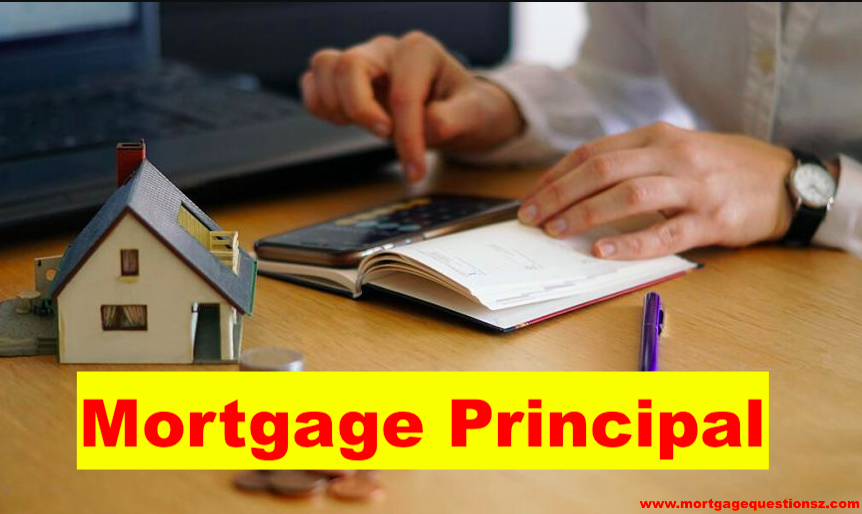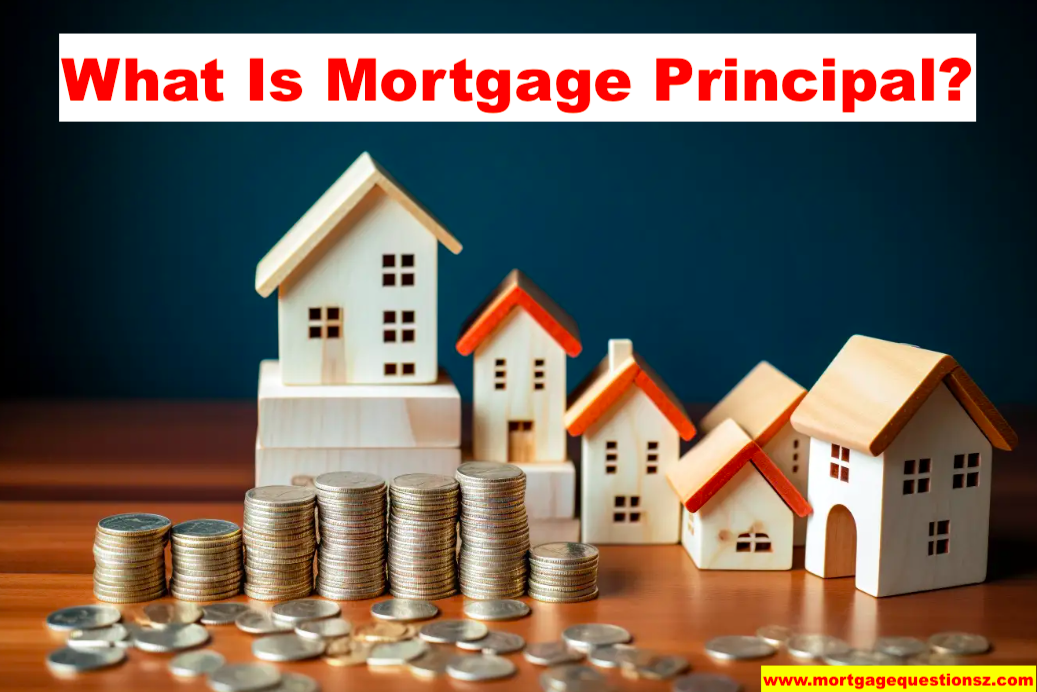Mortgage Principal is the amount of money that a homebuyers borrow from a mortgage lender to purchase a Home. This amount is typically based on the purchase price of the home, minus any down payment that a homeowner makes. When a homeowner takes out a mortgage loan then they agree to make the monthly payment to their mortgage lenders over the set period. A portion of each monthly payment goes towards paying off the interest on their Mortgage Loan, while the remainder goes towards paying down their Mortgage Principal.
Mortgage Principal is helpful to homebuyers in determining how much they can afford to borrow when they are shopping for a home. Mortgage Principal is also helpful in understanding the homebuyers how their monthly mortgage payment is broken down and what portion of it is going towards paying off Mortgage Principal. Also understanding the Mortgage Principal can help homebuyers make informed decisions about their Mortgage, such as whether to refinance or make additional payments towards their Mortgage Principal to pay off their loan faster.
Mortgage Principal refers to the initial mortgage amount taken against the property the borrower mortgaged. When a homebuyer obtains a mortgage it comes in two parts Mortgage Principal and Interest. The Mortgage Principal is the amount that the homebuyers borrow from the Mortgage Lenders and Interest is the percentage of that principal amount charged by the Mortgage Lenders as the cost of borrowing that money When repaying, the homeowners have to pay both the Mortgage Principal and Interest.
What Is Mortgage Principal?
The Mortgage Principal is the original amount that a homebuyer borrowed to pay for their Home. It is not the amount the homeowners paid for their home, nor is it the amount of their monthly mortgage payment. Each month the homebuyers make a payment a portion goes toward the original amount the homebuyers borrowed, a portion goes towards the interest payment and some goes into paying for taxes or Mortgage Insurance. Mortgage Principal is the sum the homeowners borrow from a lender to purchase a home. Part of each Monthly Payment the homebuyers send in will go toward reducing their Mortgage Principal.

Does the Monthly Mortgage Principal Payment Change?
With a fixed-rate mortgage, the payment stays the same for the Mortgage term, but the amount that goes to the borrower’s Mortgage Principal will change every month. An Amortization schedule designates a greater portion of Monthly Mortgage Payments towards interest in the starting. Over time, the amount that goes towards the Mortgage Principal will increase and the amount they are paying towards interest will decrease. With an Adjustable-rate Mortgage, an initial fixed period is followed by an adjustable period. They are also usually based on a 30-year amortization, but most Adjustable-Rate Mortgage borrowers are interested in short-term benefits and the initial rate discount, not a principal reduction.
What is Mortgage Principal Reduction?
A Mortgage Principal Reduction involves making extra payments toward the principal balance of the Mortgage which can save homebuyers thousands of dollars over the life of the loan. The most significant advantage of Mortgage Principal reduction is that it can help the borrowers to save money on interest. When homebuyers make extra money towards the Mortgage Principal, they are decreasing the amount of interest they will pay over the life of the Mortgage. Mortgage Principal Reduction can offer several benefits as it can increase the home equity. Reducing Mortgage Principal can also provide a sense of financial security. When homebuyers owe less money on their Mortgage, they have more financial flexibility and can better manage their finances.
How To Qualify For Mortgage Principal Reduction?
Qualifying for the Mortgage Principal Reduction can save thousands of dollars in the long run, and make homebuyers’ monthly payments more manageable. However, the Mortgage Principal Reduction process can be complex and difficult to navigate, so it’s important to understand the requirements and steps involved in Mortgage Principal Reduction.
- Proof of hardship: To qualify for the Mortgage Principal Reduction, one of the most important things the homebuyers need to know is the proof of hardship. It includes a range of financial difficulties such as job loss, medical expenses, or divorce. The homebuyers need to provide documentation to support their claim, such as bank statements, tax returns, and proof of income.
- Eligibility Requirements: The homeowners also need to meet certain eligibility requirements to qualify for the Mortgage Principal Reduction. This can vary depending on the program they are applying for, however, it may include factors such as type of loan, credit score, and current income level.
- Program Options: There are a few different programs that may be available to help homeowners qualify for the Mortgage Principal Reduction. One common option is the Home Affordable Modification Program (HAMP), which is designed to help homebuyers who are struggling to keep up with their Mortgage Payments.
How to Apply For Mortgage Principal Reduction?
Here are some steps that homeowners need to take to apply for a Mortgage Principal Reduction:
- Contact the Mortgage Lenders: The First Step for Mortgage Principal Reduction is that homebuyers need to contact the Mortgage Lenders and let them know about Mortgage Principal Reduction. They may have a specific application or forms that they need to fill out.
- Provide Documentation: The Mortgage Lenders will likely require the homeowners to provide the documentation to prove that they are experiencing financial hardship. This may include Pay Stub, Bank Statements, or Tax Returns.
- Explain the Situations: When homeowners talk to the Mortgage Lenders, then they need to make sure to explain their situation in detail. Also, homebuyers have to tell them why they are struggling to make their payments and what they have done to try to improve their financial situations.
- Consider the Loan Modification: One option for the Mortgage Principal Reduction is a Loan Modification. This may involve changing the terms of a Loan such as interest rates or the length of the loan, to make payment more affordable.
- Look into a Forbearance Agreement: It allows homeowners to temporarily stop making payments or reduce their payments for a set period.
How to Pay Off Mortgage Principal?
Paying off Mortgage Principal is done by making Extra Payments. These additional payments help reduce the overall cost of the loan and let the homeowners pay it off more quickly. Here are several ways to make extra payments toward the Mortgage Principal, Including:
- Make Smaller Mortgage Principal-only Payments Regularly.
- Make one large additional payment toward the Mortgage Principal every year.
- Pay half of the monthly mortgage payment amount every two weeks, which means the homebuyers will end up making 13 months’ worth of mortgage payments over a year.
- Round up the monthly mortgage payment to the nearest $100 and pay the difference toward the principal.
- Work with the Mortgage Lender to combine the methods previously mentioned.
Frequently Asked Questions (FAQs)
Question 1: What happens when You pay off Mortgage Principal in your Mortgage?
Answer: Once you pay off the Mortgage Principal, your repayment obligations end, and no further interest or fees accrue on your account. Your Mortgage lender no longer has a legal claim on your home as you have met the terms and conditions of your contract.
Question 2: Is it advisable to Pay Extra payment on a Mortgage?
Answer: Paying Extra Payment on the Mortgage Principal will allow the homebuyers to build equity, pay off the Mortgage faster, and lower the cost of Interest.
The Bottom Lines
A Mortgage Principal is the outstanding balance of the Mortgage Loan and the amount homebuyers ultimately have to pay back. Mortgage Principal affects the interest that accrues and influences their Mortgage loan’s monthly payment. Understanding mortgage principles helps Homeowners decide how much home they can afford and stay on top of their monthly payments.
